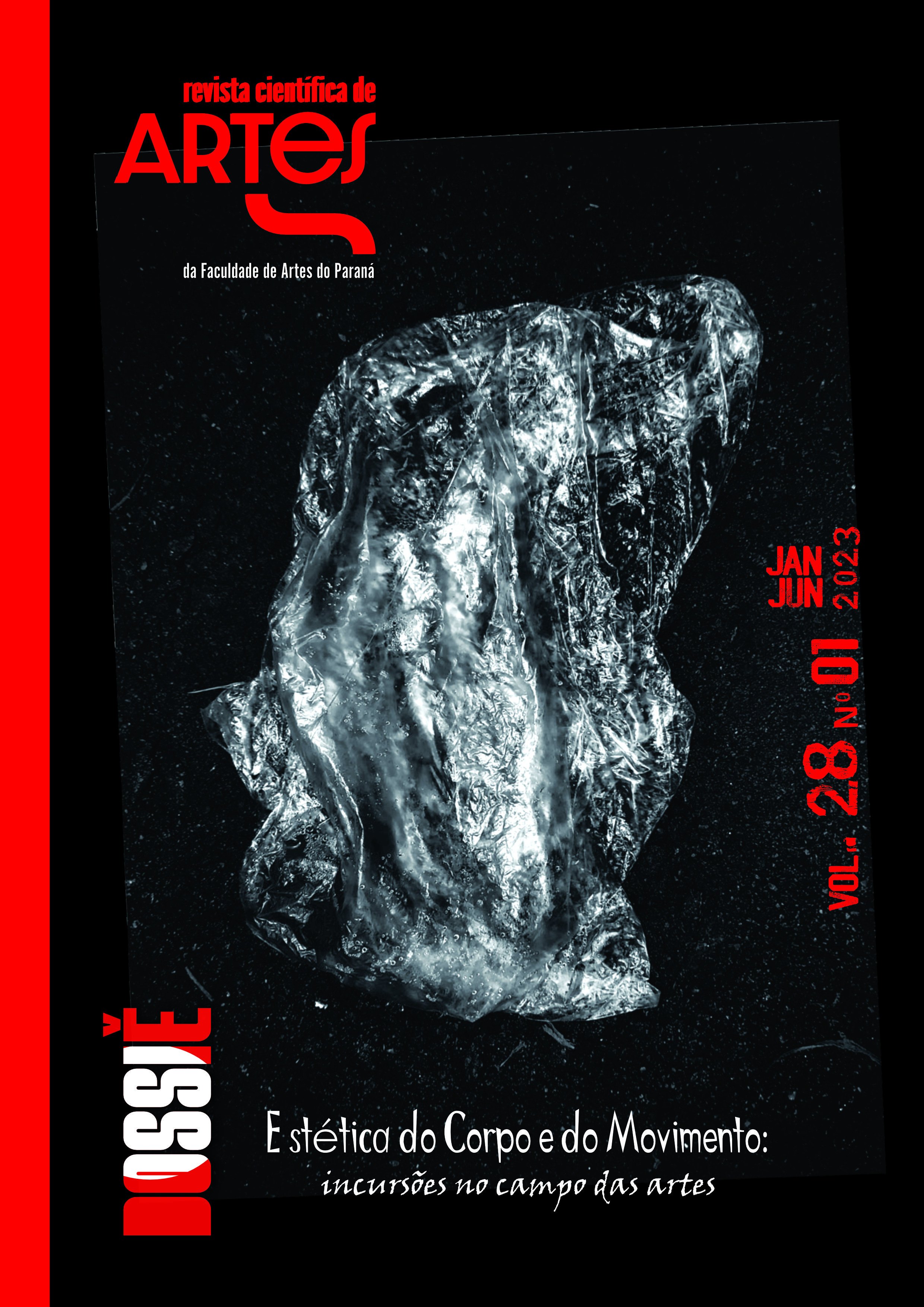PORNOGRAFIA E GRAVURA
MOVIMENTOS POLÍTICOS DOS CORPOS E DAS IMAGENS ESTÁTICAS ENTRE O SÉC .XVI E XX.
DOI:
https://doi.org/10.33871/19805071.2023.28.1.7441Keywords:
etching; pornography; contradictoryAbstract
The article aims to highlight how etching and pornography were associated with the political movements of bodies, instrument and starting point of artistic productions with the representation of static movement until the 19th century and parallel to moving images in the 19th and 20th century. Divided into four sections, in the first the etching is technically addressed and its processes are linked to the contradictory as a principle from which the image becomes reproducible. In the second, an analysis of the terms erotic and pornographic and as in the 16 th century is made, the latter was linked to printing systems and the debate about the contradiction between original and copy. In the third section, pornography is linked to political-subversive and literary action in etching, mainly in 17th and 18th century France. In the latter section, the invention of lithography and photography in the 19th century XIX is addressed not only as an emancipatory element of the production of the artist's graphic work, as well as become propellant of modernist avant-gardes, some of which, identified with the explicit visuality of the genitalia and the sexual act despite the development of the moving image.
Downloads
References
AMARAL, Aracy. Arte para quê?A preocupação social na arte brasileira 1930-1970: subsídios para uma história social da arte no Brasil. 3'. ed . - São Paulo: Studio Nobel. 2003.
ARGAN, Giulio C. Arte Moderna. Trad. São Paulo: Companhia das Letras, 1992.
BATAILLE, Georges. O erotismo. Porto Alegre: L&PM, 1987.
BELTING, Hans. Antropologia da imagem: Para uma ciência da imagem. 2ª ed. Rio de Janeiro: Muad, 2002.
BELLMER, Hans. Bellmer Obliques. Paris: Editiones Borderie, 1975.
BENJAMIN, Walter. Magia e técnica arte e política:Ensaios sobre literatura e história da cultura. 3ª ed. São Paulo: Editora Brasiliense, 1987.
DA VINCI, Leonardo. Tratado da Pintura. Trad. Manuel ABRIL. Madri: Aguilar, S.A de Ediciones, 1964.
DEJEAN, Johan. A politização da Pornografia: L'École des filles. In: LYNN, Hunt (org.). A invenção da pornografia: Obscenidade e as origens da modernidade de 1500 a 1800. 1ª ed. São Paulo: Hedra, 1999. p. 115-130.
ECO, Umberto. História da feiura. Rio de Janeiro: Record, 2007
FINDLEN, Paula. Humanismo, Política e Pornografia no Renascimento Italiano. In: LYNN, Hunt (org.). A invenção da pornografia: Obscenidade e as origens da modernidade de 1500 a 1800. 1ª ed. São Paulo: Hedra, 1999. p. 49-114.
FOUCAULT, Michel. História da sexualidade. A vontade de saber. 13ª ed. Rio de Janeiro, Edições Graal, 1988.
HUNT, Lynn. (org.). A invenção da pornografia: Obscenidade e as origens da modernidade de 1500 a 1800. 1ª ed. São Paulo: Hedra, 1999. p. 9-48.
IVINS Jr, William Mills. Imagen y conocimiento: Análisis de la imagen prefotográfica. Barcelona: Editorial Gustavo GiIli. S.A, 1974.
JACOB, Margueret C. o Mundo materialista da Pornografia. In: LYNN, Hunt (org.). A invenção da pornografia: Obscenidade e as origens da modernidade de 1500 a 1800. 1ª ed. São Paulo: Hedra, 1999. p. 169-215.
MORAES, Eliane Robert. Café Filosófico: A pornografia. Youtube. Postado em 2013. Disponível em: <https://www.youtube.com/watch?v=PayIEbiS4_w> Acesso em: 14 maio 2022.
PERNIOLA, Mario. Pensando o ritual: sexualidade, morte, mundo. São Paulo: estúdio Nobel, 2000.
ROMEI, Danilo.Sonetti Lussuriosi. Edizione critica e commento di Danilo Romei. (internet) 2013. Disponível em: <https://docplayer.it/9245531-Pietro-aretino-sonetti-lussuriosi-edizione-critica-e-commento-di-danilo-romei-banca-dati-nuovo-rinascimento.html>Acesso em: 17 maio 2022.
TRIMBACH,Randolph. Fantasia erótica e libertinagem masculina no Iluminismo Inglês. In: LYNN, Hunt (org.). A invenção da pornografia: Obscenidade e as origens da modernidade de 1500 a 1800. 1ª ed. São Paulo: Hedra, 1999. p. 273-308.
Downloads
Published
How to Cite
Issue
Section
License
The authors retain the copyright, when licensing their production in Revista Científica/FAP, which is licensed under a Creative Commons license. When submitting the article, and upon acceptance, the author assigns his copyright for publication in that journal.
Readers can download, print and use the articles published in the journal, as long as there is always an explicit mention of the author (s) and the Revista Científica/FAP, no changes to the original work are allowed. When submitting an article to Revista Científica/FAP and after its being accepted for publication, the authors allow, without remuneration, to pass the following rights to the Journal: the first edition rights and the authorization for the editorial team to transfer, according to their judgment, this article and its metadata to indexing and reference services.


